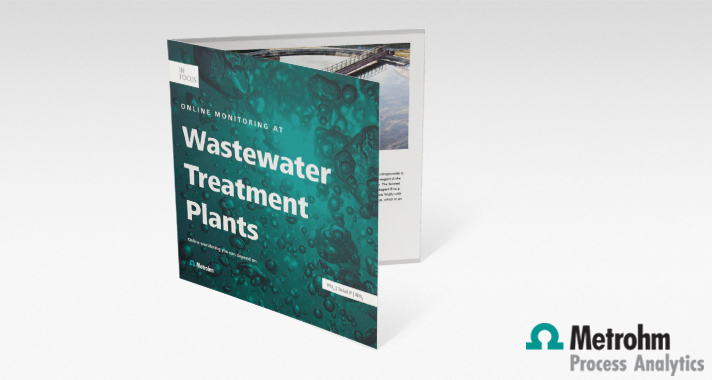In Focus: Online monitoring at wastewater treatment plants.
Monitoring PO4 and Total P concentrations in real time
Removing phosphorous compounds from wastewater is important. Having too much phosphorous compounds in the plant effluent causes algal blooms. As consequences of algal blooms, the dissolved oxygen diminish and then animal life is threatened. By measuring phosphorous compounds in influent and effluent helps wastewater treatment plants to improve their efficiency as well as to make sure that EPA limits are meet. Learn more about Metrohm online phosphate and total phosphorous compounds analysers by visiting www.metrohm.com.au.
Phosphate in Wastewater
Phosphate concentration from wastewater (effluent and influent) is commonly measured by so-called “molybdenum blue” method. Ammonium molybdate and potassium antimonyl tartrate react in acid medium with orthophosphate to form phosphomolybdic acid, which is reduced to intensely coloured molybdenum blue by ascorbic acid.
Total Phosphorous Compounds
Total phosphorous compounds are measured using thermal digestion to breakdown organic and inorganic phosphate compounds to orthophosphate under the influence of persulfate and sulfuric acid. After digestion added ammonium molybdate and potassium antimonyl tartrate react in acid medium with orthophosphate to form phosphomolybdic acid, which is reduced to intensely coloured molybdenum blue by ascorbic acid.
Monitoring NH3 concentration in real time
Nitrification of wastewater removes ammonia. In this purification process ammonia eventually get converted into nitrogen gas. By measuring ammonia in influent and effluent helps wastewater treatment plants to improve their efficiency and as well as to make sure that EPA limits are meet.
Ammonia in Wastewater
The colorimetric determination of ammonia using nitroprusside is based on the Bertholet method. After addition of reagent A the ammonia reacts quantitatively to monochloramine. The formed monochloramine reacts with the components of reagent B to a quinone monoimine. This quinone monoimine reacts finally with a thymol molecule to the respective indophenol dye, which in an alkaline medium occurs in the blue basic form.









